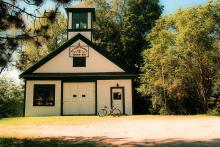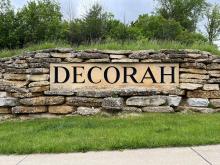
Born in Orono, Maine, the poet Frances Laughton Mace’s most notable verses were published in 1854 as a hymn entitled “Only Waiting.” Over a century and a half later, residents in her native town – and in the neighboring community of Old Town just four miles up the road – might be inclined to hum a line or two. Not because they are getting religion, but because of the wait in getting Fiber-to-the-Home (FTTH) Internet connectivity.
After a decade of hopeful planning, disappointing setbacks, design work, and putting out multiple RFPs to move the project forward, the nonprofit OTO Fiber Corporation is on the verge of lighting up a six-mile fiber network this summer. With three miles of fiber deployed in Orono, a town of 11,000 residents and home to the University of Maine’s flagship campus, and the other half covering a portion of Old Town, the budding network will provide FTTH service to a limited number of residences and businesses in both towns. It’s a pilot project that, if successful, will serve as a core network which can eventually be extended to cover the entirety of both communities.
“It’s taken us forever to get to this point it seems. We started this process ten years ago and we are still slogging our way through while we’ve seen other communities zip ahead,” Belle Ryder, Orono Assistant Town Manager and President of OTO Fiber, told us this week. “It is really, really, really hard for communities relying on volunteers to pull off the feat of building and operating these networks.”
Ryder wasn’t complaining or exasperated. She was just being candid about the process she and her colleagues at OTO Fiber are committed to see through to the finish. The slog she is referring to goes back a decade when Orono was in the process of putting together a comprehensive development plan.
Families and Fiber, Fits and Starts
With just about half of the town’s population made up of college students living in off-campus apartments and the other half made up of residents 60 and older, “we really needed to draw families back,” Ryder explained.
Old Town and Orono are right next to each other on the Penobscot River, 10 miles north of Bangor. Both communities saw flat or negative population growth from 1980-2000, and only 3 percent growth over the last decade.

But even before the pandemic and rise of remote work and schooling, town planners were looking “at how we could leverage the university’s assets, the intellectual capital there, and use that to feed business development,” Ryder said.
In 2012, Orono and Old Town partnered with the University of Maine, local business owners, and the Biddeford-based telephone company and Internet Service Provider GWI on a project known as Gigabit Main Street, which aimed to bring gig-speed fiber service to the region. GWI said they would build the fiber network but then pulled out when they realized they weren’t able to get a return on investment within a three-year window.
“At first they said we can hang fiber in your community and the town doesn’t have to invest anything. It turned out to be more of a fiber-to-the-press-release deployment than a fiber-to-the-home deployment,” Ryder said. “They couldn’t make it work.”
The experience with GWI is a prime example of a broken marketplace. Fiber networks have high upfront capital costs. In sparsely populated regions where Internet Service Providers are interested in maximizing short-term profits, it doesn’t make “business sense” to make large capital investments associated with quality broadband infrastructure. Municipalities, on the other hand, don’t get into the business to make profits and also have the ability to finance expensive capital projects with debt that can be paid back over decades.
GWI has gone on to be a strong partner for communities in Rockport and Ilseboro, building strong subscriber goodwill especially their fiber service.
When that became clear after the Gigabit Main Street project fizzled out, Ryder said, Orono, Old Town and the University of Maine signed an agreement to work together to create a less ambitious fiber network, which led to the birth of OTO Fiber in 2015.
“So we started down this path of how do we get fiber hung in our community? After a few tries we eventually received a $250,000 grant from the Northern Border Regional Commission. The town of Orono put up about $120,000, and Old Town put up $90,000,” Ryder said. This would be enough to hang the backbone fiber (see map of Old Town portion above).
Using separate funds, the two towns and University paid for a feasibility study. And through that process, Ryder said, OTO developed “our pie in the sky project and proposal.”
It took OTO three months to write the RFP for the feasibility study and another six months for the feasibility study to be completed. It was another six months to determine how they wanted to design the network, Ryder said.
Then, she said, it took the all-volunteer OTO board another six months to put together another RFP to find a company to build the network.
“We didn’t get any responses back that fit our budget so we had to reissue the RFP,” Ryder recounted. “But the bids that came back were too expensive. So we sent the RFP back out.”
The New Gloucester, Maine-based company Icon Connections eventually submitted the winning bid to build the core network where the highest density of residents live. Meanwhile, OTO had to do the make-ready work and acquire the pole licenses needed to hang the fiber.

It wasn’t until the winter of 2019 that fiber was deployed. OTO had finally gained some momentum. Then, the pandemic turned everything upside down and the build came to a stand-still in the spring of 2020. Also, OTO still had not found a company who would handle the network operations and provide Internet service.
“We finally got out an RFP for lighting up the network in December of 2020,” she said.
“Over the years we spoke to a lot of ISPs and began to understand that our idea of doing this as a dark fiber network wasn’t very enticing. So we changed our model so we would hire a network operator and then have an ISP provide the service where the ISP would pay us and pay the operator,” Ryder said.
Service Almost Ready to Drop
Slowly but surely, OTO was making progress. But, the grant funding OTO had acquired paid for the building of the core network backbone only, not the drops.
“We needed to figure out how to pay for the drops at about an average of $1,000 per drop,” Ryder said, adding that while 2020 was a “terrible year,” when it came to broadband, “it was an eye-opening shot in the arm.”
“People suddenly understood why symmetrical service is so important and how you might be paying for 100/10 (Megabits per second from the existing ISPs) but really only getting 6/5 (Mbps),” she said.
The necessity for reliable high-speed Internet service, Ryder believes, played a central role in garnering support for Orono to issue $250,000 in bonds, while Old Town established a $100,000 revolving loan to fund the drops.

Right now, with fiber passing 450 premises across both towns with a majority of those premises multi-dwelling units, OTO is in the final stages of installing the drops.
“And we are in negotiations with an ISP to operate and light up the network,” Ryder said, noting that OTO should have its first paying customers online sometime this summer.
Finally, after all the waiting, OTO Fiber is on the brink of delivering service, at least to a limited part of its potential service area.
“The take rate is the key,” Ryder said. “Between 30 and 50 percent is what we need to pay back the bond comfortably. If we get 50 percent, we can look at expanding the network.”
As OTO gets closer to offering service, Ryder said, they will need to settle on what service packages they will offer. Ryder said the pricing has not been determined but she expects OTO will offer three service tiers: 100 Mbps symmetrical, 250 Mbps symmetrical and 1 Gigabit per second (Gbps) symmetrical.
The process thus far may not seem poetic, but the end result, if the pilot project proves successful, will be music to the ears of Orono and Old Town residents.
Note: This story has been updated to add additional context about GWI's work with other communities in the region.
Header image of old fire engine house in Orono, Maine from Wikimedia Commons via user E Julienn via Creative Commons Attribution-Share Alike 3.0 Unported
Inline images courtesy of OTO Fiber









